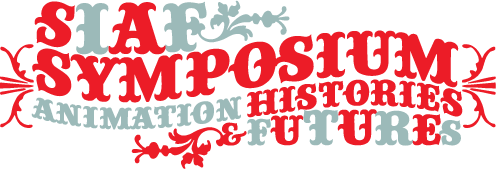A selection of writings from the proceedings of ‘Animation Histories and Futures’, a one-day
symposium set up to stimulate discussion between animation researchers, teachers and practitioners, is now available for download.
‘Animation Histories and Futures’ was hosted by the University of Technology, Sydney, Faculty of
Design, Architecture and Building in collaboration with the Faculties of Arts Social Sciences and Humanities
and Information Technology.
The symposium took place on 25 September 2010 as part of the UTS Sydney International Animation Festival
2010. The symposium brought together an international cohort of animation researchers from across a
diversity of animation theory and practice. As the first symposium dedicated to animation held at UTS the
response and diversity of presentations was impressive.
Eminent writers such as Alan Cholodenko and Pierre Floqet provided key note addresses that
further advance the dialogue that each of these writers has undertaken with animation spanning many years
of research and writing. We are privileged to have their contributions to the seminar and this publication of
selected writings from the proceedings.
This collection of papers represents the diversity of animation thinking and research that is occurring
around the world today. As Pierre Floqet points out in his paper, “it is now acknowledged that “virtually all
contemporary cinema is reliant on animation as the key source of its story-telling devices and effects” (Wells, 2002,
p.28)” (Floquet, p.32). As it would follow, where animation plays such a central role there is ample terrain
for writers and practitioners to find a unique line of enquiry on which to think and write and to expand
our ideas on animation further than ever before. As Alan Cholodenko proposes in his paper, animation is
life and death and “bears not merely a significant but a singular importance to the contemporary world”
(Cholodenko, p.8).
What I find particularly relevant to today’s animation practice is the personal narratives that are reflected in
these writings. In particular the writings of Charles de Costa and Rachel Walls who bring forth new
ways of seeing animated films that are familiar to millions of viewers. Other writers like Chavez / Yi and
Rall create insight into the challenges faced by animators engaged in cross-cultural storytelling and the role
of animation in new forms of storytelling for interactive engagement. These writings bring a new perspective
on the way in which animated stories are re-inventing interest in traditional narratives and using innovative
technologies to create new audiences for animation.
http://www.dab.uts.edu.au/research/conferences/siaf/SIAF-SYMPOSIUM-WRITINGS-2011.pdf
http://www.siaf.uts.edu.au/dev/wp-content/themes/siaf2011/pdf/SIAF2010SYMPOSIUM.pdf


